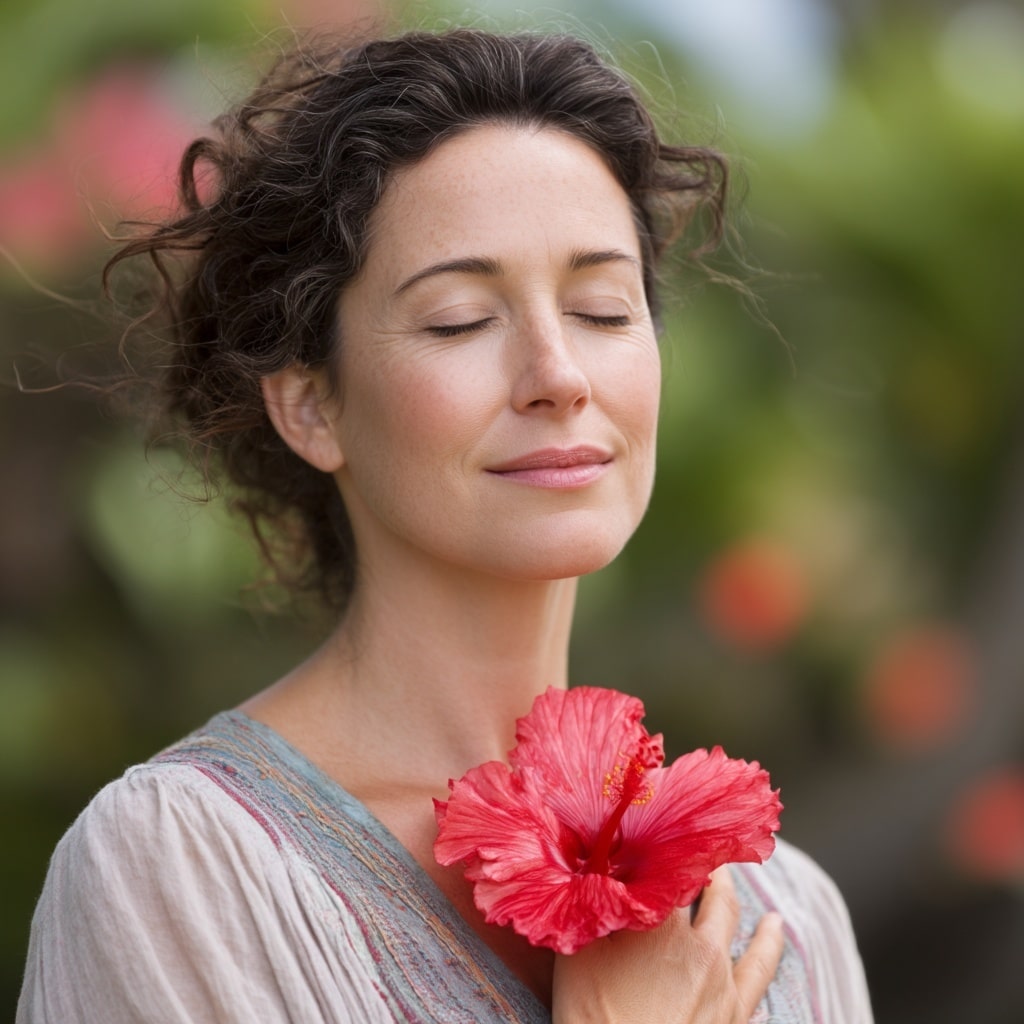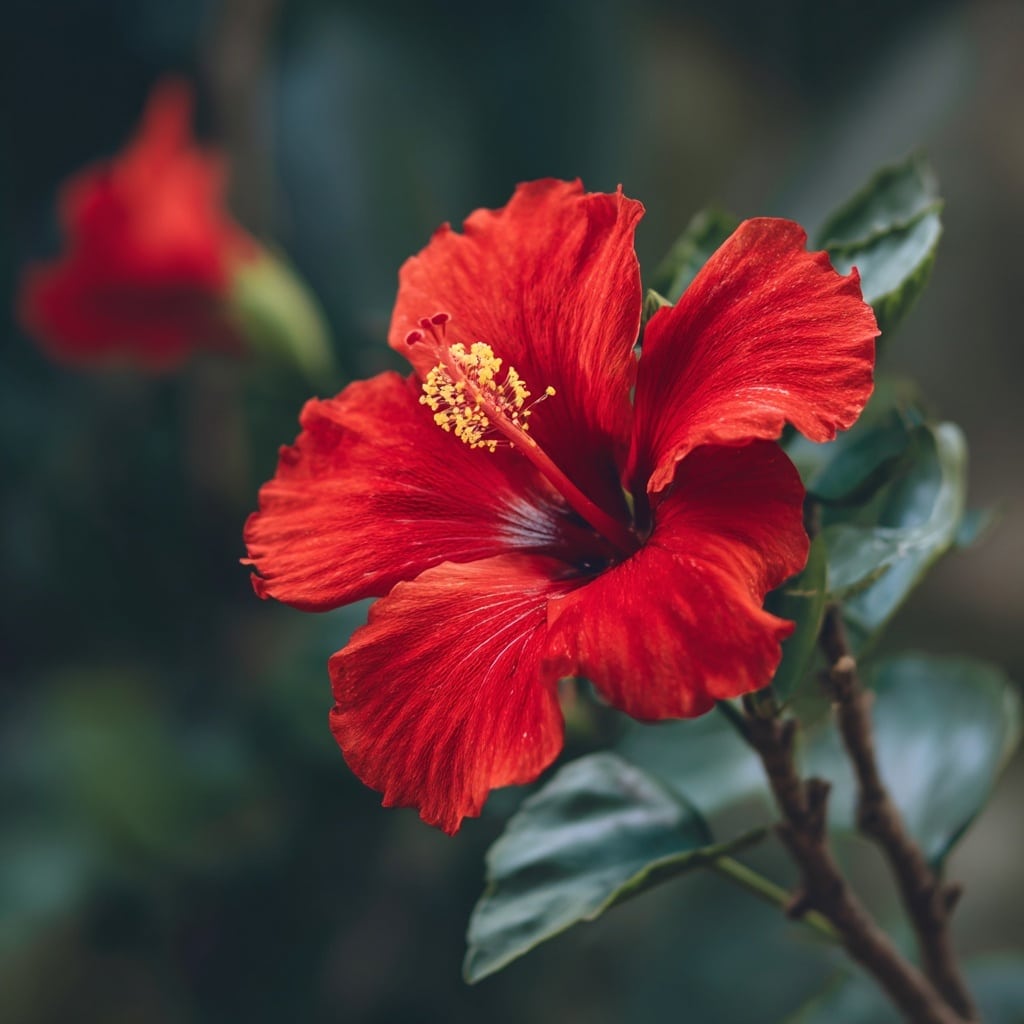Flower hibiscus is more than just a tropical showstopper—it carries layers of meaning rooted in culture, spirituality, and nature’s fleeting beauty. With its bold, trumpet-shaped blooms and rich color spectrum, the flower hibiscus draws attention wherever it grows. But beyond its visual charm lies a deeper symbolism that resonates with people across the world. From ancient ceremonies to modern tea rituals, this elegant flower speaks to themes of love, life, and emotional healing. Whether in a garden or a teacup, its presence often marks a moment worth remembering.
Table of Contents
What Does the Flower Hibiscus Symbolize?
The flower hibiscus holds a rich blend of symbolic meanings that go far beyond its petals. One of the most profound ideas tied to this bloom is transience. The hibiscus often blooms for just a day, reminding us that beauty—and life—is fleeting. This temporary brilliance teaches us to live fully in each moment, appreciating what we have before it fades.
Culturally, the flower is also a symbol of femininity, grace, and gentle strength. In many traditions, it’s associated with the divine feminine, sensuality, and the soft but powerful aspects of nature. Its delicate structure and vibrant hues mirror the balance of inner beauty and outer confidence.
This blend of ephemeral charm and spiritual depth makes the flower hibiscus not just a feast for the eyes, but a powerful symbol in gardens, ceremonies, and personal expression.
Spiritual Meaning of the Flower Hibiscus
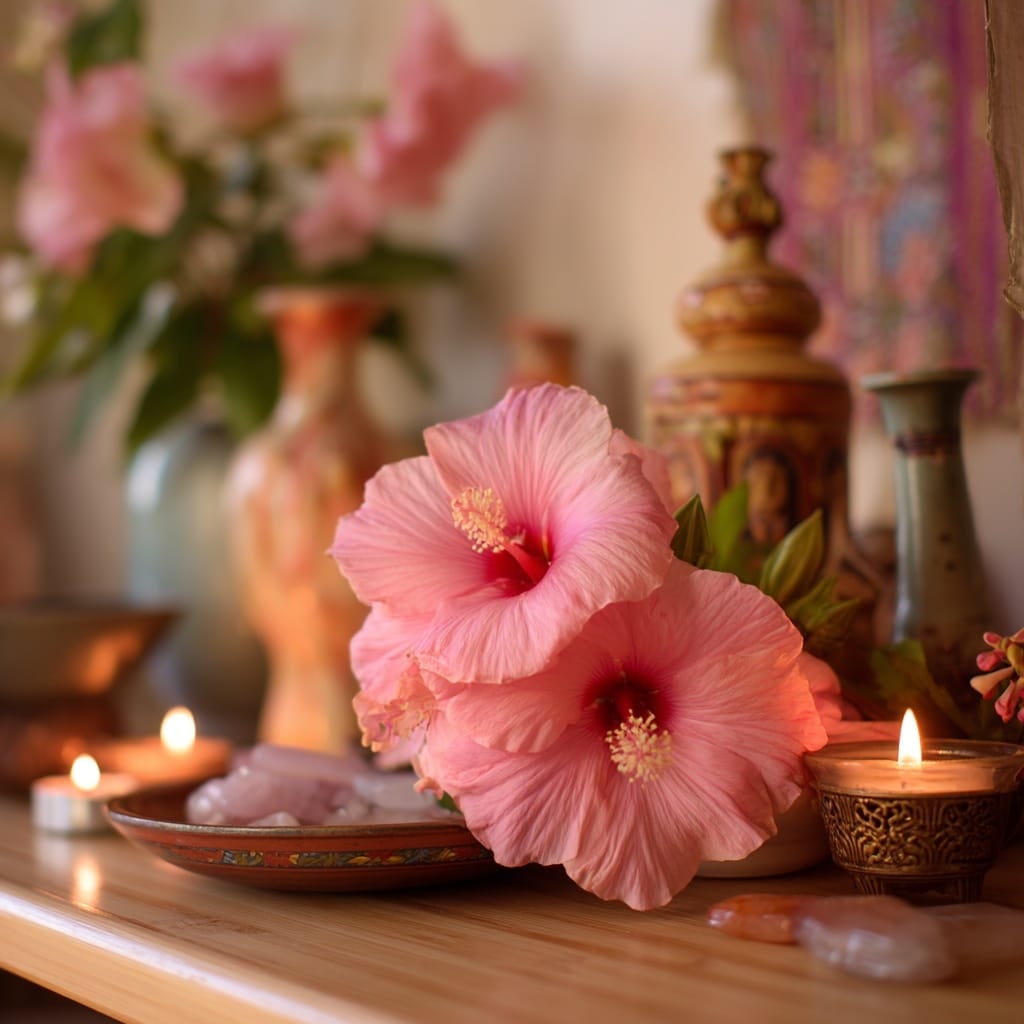
Spiritually, the flower hibiscus is often viewed as a bridge between the physical and metaphysical realms. In many belief systems, it represents transformation, renewal, and balance, encouraging inner growth and alignment. Its vivid energy is said to awaken the senses and help open emotional pathways, making it a favorite in meditative and sacred spaces.
A strong spiritual association is with the heart chakra, the energy center tied to love, compassion, and connection. The wide, open petals of the hibiscus are thought to reflect an open heart—ready to give and receive without fear.
The flower hibiscus also symbolizes the divine feminine. Its lush, full form mirrors creation, fertility, and the nurturing cycles of life. Because of this, it’s commonly used in rituals for love, emotional healing, and spiritual clarity.
Whether placed on an altar, brewed into calming tea, or simply admired in a peaceful garden, the flower hibiscus offers more than beauty—it offers balance, spiritual focus, and renewal.
Color Symbolism of the Flower Hibiscus

Different colors of the flower hibiscus carry their own unique meanings. These subtle variations speak to diverse emotions, intentions, and energies—making color an essential part of the hibiscus’s symbolism.
❤️ Red Hibiscus
A red flower hibiscus symbolizes passion, love, and desire. It’s often given as a romantic gesture or used in weddings and ceremonies that celebrate deep affection. Red blooms ignite emotion and reflect intensity, making them a powerful visual expression of heartfelt feelings.
🤍 White Hibiscus
The white flower hibiscus stands for purity, innocence, and spiritual awareness. It’s frequently used in meditative or sacred spaces where peace, clarity, and divine connection are the focus. This color promotes serenity and helps clear mental or emotional clutter.
💗 Pink Hibiscus
Soft and sweet, the pink flower hibiscus represents gentle love, femininity, and friendship. It carries a light-hearted, nurturing energy—perfect for expressing gratitude or emotional warmth without intense romantic implications.
💛 Yellow Hibiscus
A yellow flower hibiscus shines with joy, positivity, and good luck. Often linked to happiness and optimism, this cheerful color is said to attract uplifting energy and promote vibrant social connections. It’s ideal for brightening both spaces and moods.
💜 Purple Hibiscus
The purple flower hibiscus is deeply spiritual, symbolizing mystery, intuition, and creativity. It reflects higher wisdom and is often associated with people seeking inner knowledge or embarking on a journey of self-discovery.
💙 Blue Hibiscus
Rare and striking, the blue flower hibiscus symbolizes calm, introspection, and spiritual depth. It encourages reflection and emotional peace, making it a gentle companion for solitude or meditation.
The Flower Hibiscus in Different Cultures
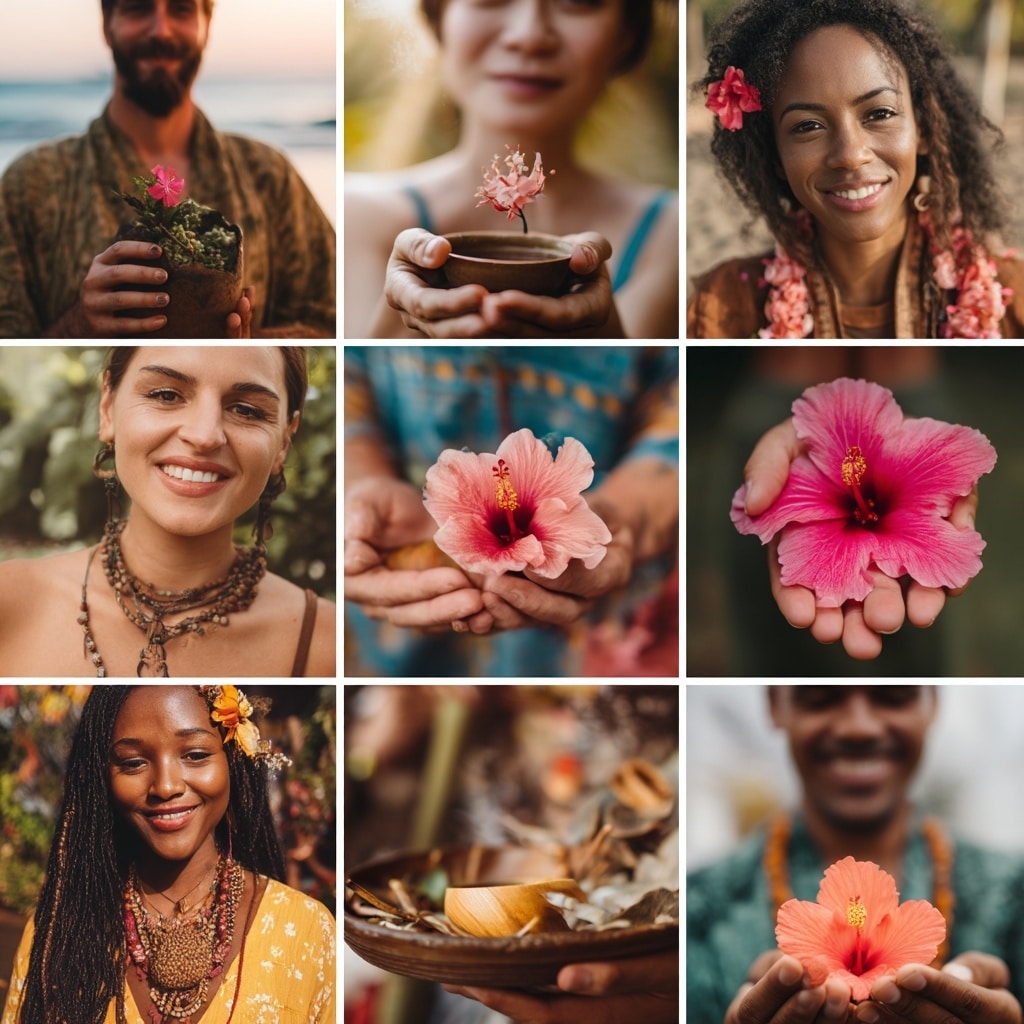
The flower hibiscus carries profound cultural significance across the globe. While its appearance may vary, its meaning always roots deeply in symbolism, tradition, and identity.
🌺 Hawaii – A Symbol of Joy and Hospitality
In Hawaii, the flower hibiscus is the state flower, particularly the yellow variety. It represents warmth, hospitality, and respect. Often used in leis and celebrations, the flower also signals relationship status—worn behind the left ear if taken, and behind the right if single.
🇮🇳 India – Sacred to the Divine Feminine
In India, the red flower hibiscus is considered sacred, especially in offerings to the goddess Kali. Its bold color symbolizes strength, devotion, and power, making it an important part of Hindu rituals. Garlands of hibiscus are often used in temples to honor divine energy.
🇨🇳 China – Wealth and Fame
In Chinese tradition, the flower hibiscus represents personal success, fleeting beauty, and prosperity. It is frequently featured in art and poetry as a reminder that glory is beautiful but short-lived—just like the hibiscus bloom.
🇯🇵 Japan – Kindness and Positivity
Known as fuyou, the hibiscus in Japan symbolizes gentleness and goodwill. It’s less associated with romance or ritual, and more with simple kindness. The flower is often used in home gardens and casual gifts to share warmth and positivity.
🌴 Caribbean & Latin America – Vitality and Celebration
In Caribbean and Latin American countries, the flower hibiscus is a vital part of daily life and celebration. It’s widely used to make hibiscus tea, known as Flor de Jamaica in Mexico. This beverage symbolizes health, rejuvenation, and festive connection.
🌍 Africa – Unity and Courage
In several African cultures, the flower hibiscus stands for community, strength, and hospitality. The deep red hibiscus tea, often called karkadeh, is served to guests as a sign of respect and warmth. It’s also used in healing and ceremonial practices.
🇰🇷 South Korea – National Pride and Perseverance
Called mugunghwa, the flower hibiscus is the national flower of South Korea. Its name translates to “eternal blossom,” representing resilience, hope, and national spirit. It’s a powerful symbol in literature, history, and civic pride.
🇪🇬 Egypt – A Beverage of Connection
In Egypt, karkadeh tea made from hibiscus flowers is central to celebrations, weddings, and family gatherings. It reflects well-being, balance, and togetherness, making it more than just a drink—it’s part of the culture.
🏝️ Polynesia – Life Cycles and Renewal
Across the Polynesian islands, the flower hibiscus is used in rituals honoring birth, marriage, and death. It reflects eternal beauty and the cycle of life, linking it to themes of transformation and connection with nature.
🌍 Western Cultures – Exotic Beauty and Romance
In many Western contexts, the flower hibiscus is admired for its tropical, romantic appeal. It often appears in branding, fashion, and décor as a symbol of relaxation, paradise, and sensual charm.
Spiritual Uses of the Flower Hibiscus

The flower hibiscus has long been revered in spiritual practices for its energy-clearing, heart-opening, and intention-enhancing qualities. It’s not just admired—it’s used with purpose in rituals and sacred spaces.
Many believe the flower holds a natural ability to attract love, balance emotions, and raise spiritual awareness. It’s often included in ceremonies focused on:
- Romantic intentions (especially with red or pink hibiscus)
- Feminine empowerment and fertility rituals
- Cleansing and protection to remove stagnant energy
Placing fresh flower hibiscus in the home or spiritual altar is thought to:
- Promote peace and emotional clarity
- Strengthen intentions during meditation or prayer
- Clear negativity and create space for positive vibrations
Dried petals are also burned or added to spiritual baths for energetic renewal. Whether fresh or dried, the flower hibiscus serves as a powerful symbol of transformation and connection to higher energy.
Emotional Healing Properties of the Flower Hibiscus

Beyond its beauty, the flower hibiscus is deeply linked to emotional balance and self-healing. Its soothing presence and vibrant colors are believed to influence mood and promote inner calm.
Many people surround themselves with hibiscus flowers to:
- Ease emotional stress
- Boost confidence and self-love
- Encourage emotional release and renewal
The flower’s soft, rounded petals and open form are often seen as symbols of openness and vulnerability—reminding us that strength lies in feeling deeply, not suppressing emotions.
Hibiscus is also used in aromatherapy, flower essences, and herbal infusions, especially when dealing with heartbreak, anxiety, or fatigue. Whether in the form of a blooming plant, tea, or essential oil, the flower hibiscus nurtures emotional resilience and helps restore a sense of peace.
Hibiscus Tea and Health Benefits
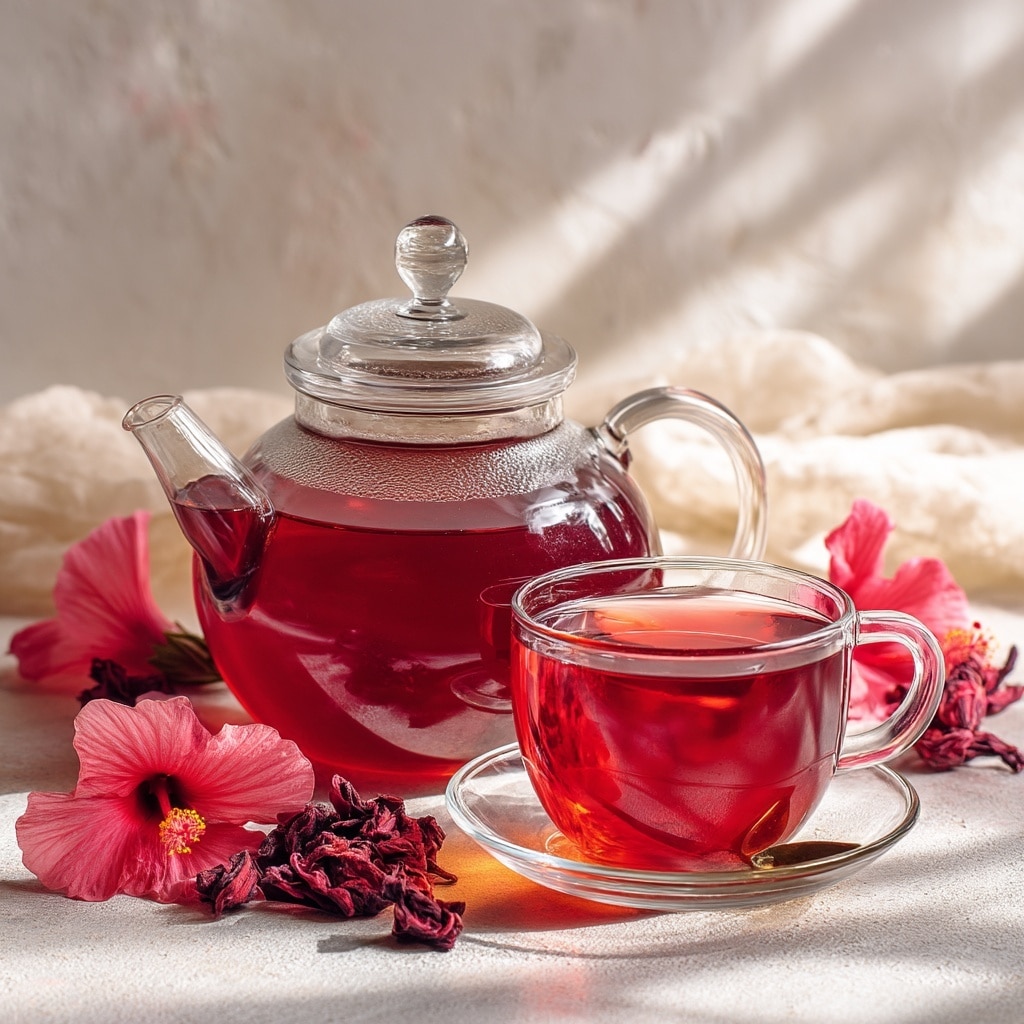
One of the most popular ways to enjoy the flower hibiscus is in tea. Known for its deep red color and tart flavor, hibiscus tea is as healing as it is refreshing. Packed with antioxidants and vitamins, it’s been used for centuries in traditional medicine.
🌿 Health Benefits of Hibiscus Tea
Drinking tea made from the flower hibiscus can support:
- Lower blood pressure and heart health
- Improved liver function and detoxification
- Reduced cholesterol levels
- Relief from menstrual cramps
- Stronger immunity and anti-inflammatory support
It also helps promote relaxation, making it a favorite in stress relief routines and bedtime rituals.
🫖 How to Make Hibiscus Tea
To brew a simple and powerful hibiscus tea at home:
- Use 2 cups of fresh hibiscus petals or ½ cup dried
- Boil in water for 15–20 minutes
- Add honey and fresh lime juice for extra flavor
- Strain and serve hot or chilled
This tea isn’t just healthy—it’s also emotionally uplifting. Many say sipping hibiscus tea feels like a spiritual reset, helping clear mental fog and invite positive energy into the day.
The Flower Hibiscus in Dreams
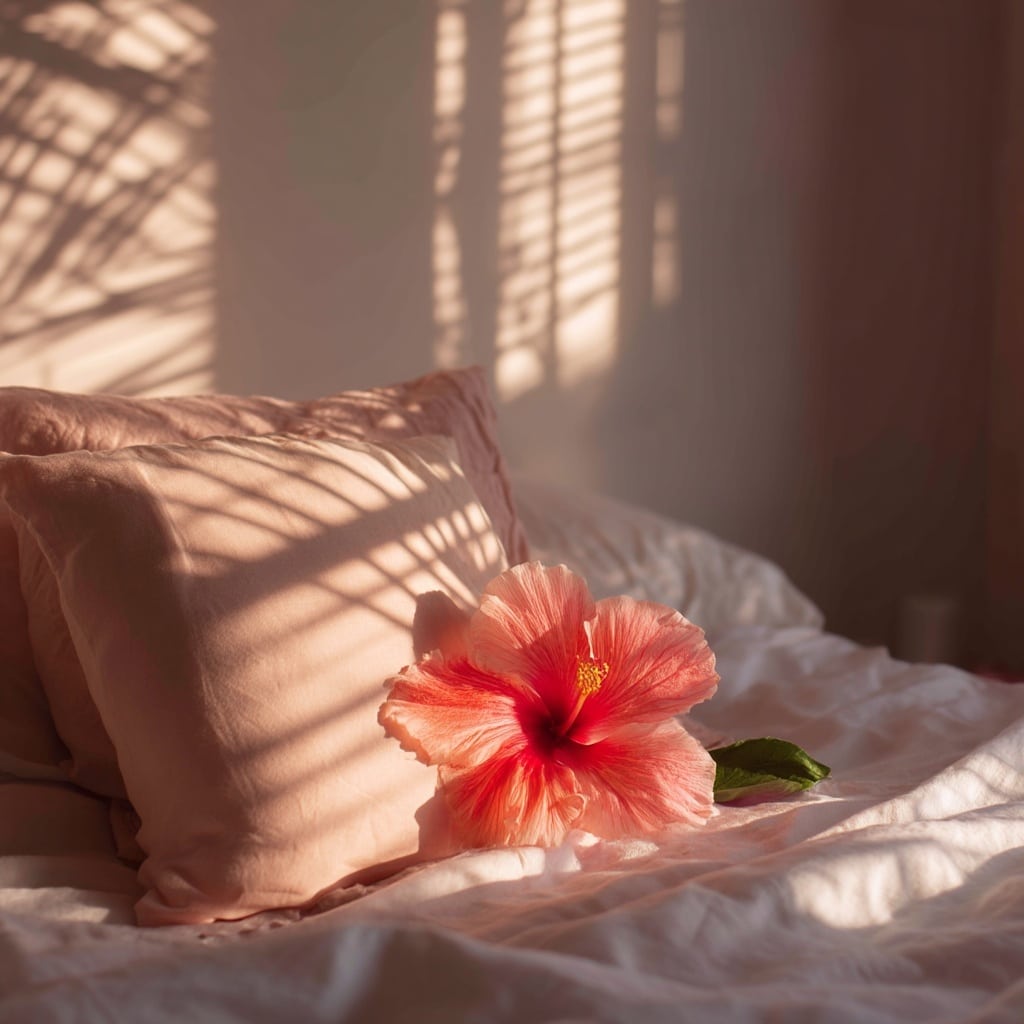
Seeing the flower hibiscus in a dream often carries messages about timing, emotion, and fleeting beauty. Since the hibiscus blooms briefly, it commonly represents opportunities that are short-lived or moments that must be appreciated before they pass.
Dreams featuring hibiscus may be your subconscious urging you to:
- Act on a current opportunity
- Slow down and savor the present
- Let go of something that has run its course
The color of the hibiscus in the dream can also add layers of meaning:
- Red hibiscus: Romantic passion or unresolved desire
- White hibiscus: A search for clarity, healing, or peace
- Pink hibiscus: Emotional vulnerability or a call for compassion
- Yellow hibiscus: Optimism, new beginnings, or personal growth
- Purple hibiscus: Spiritual insight or creative awakening
When the flower hibiscus shows up in dreams, it’s often not random—it’s symbolic of your current emotional or spiritual state, encouraging you to live fully, intentionally, and with heart.
Popular Hibiscus Varieties to Know
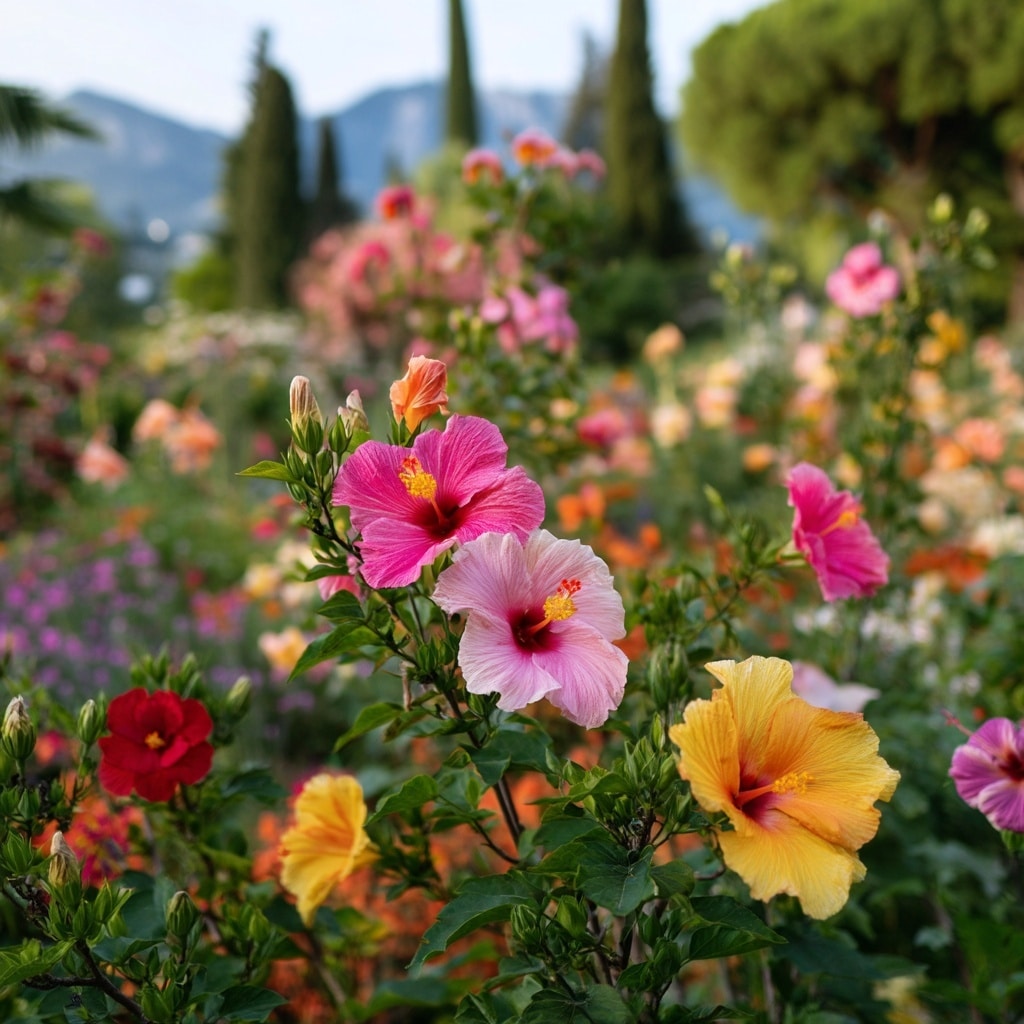
There are over 200 species of flower hibiscus, each with its own unique charm. From bold garden showpieces to subtle medicinal varieties, here are some of the most beloved types:
🌹 Hibiscus rosa-sinensis
Also called the Chinese hibiscus, this is the classic tropical variety with large, vibrant blooms in red, yellow, orange, and pink. Ideal for sunny gardens and containers.
🍷 Hibiscus sabdariffa
Known for its edible calyces used in hibiscus tea, this variety has deep red stems and tart flavor. It’s both ornamental and functional.
🌸 Hibiscus moscheutos
Called the swamp hibiscus or rose mallow, this hardy perennial thrives in wetlands. Its giant flowers can span over 6 inches wide.
🌼 Hibiscus syriacus
Often known as Rose of Sharon, this variety is beloved for its late-summer blooms and cold hardiness. Perfect for hedges and flowering shrubs.
🌿 Hibiscus acetosella
The cranberry hibiscus has deep red leaves and smaller flowers. It’s popular in edible landscaping and makes a colorful addition to salads.
🎨 Hibiscus mutabilis
Called the Confederate rose, this unique flower changes color during the day—from white to pink to red.
🌟 Hibiscus schizopetalus
Also known as fringed hibiscus or Japanese lantern, this variety features lacy, drooping petals and is a true exotic standout.
🔥 Hibiscus coccineus
The scarlet hibiscus produces bold red flowers on tall stems, perfect for attracting hummingbirds.
🌬️ Hibiscus arnottianus
A rare, white-flowered hibiscus native to Hawaii. It’s prized for its fragrance and purity symbolism.
These varieties show the incredible diversity of the flower hibiscus, from tropical landscapes to herbal remedies and decorative borders.
Conclusion
The flower hibiscus is more than a feast for the eyes—it’s a symbol of fleeting beauty, emotional renewal, cultural richness, and spiritual growth. Whether blooming in your backyard, infused in tea, or woven into ceremony, this flower brings meaning and energy wherever it appears.
Its presence reminds us to live in the moment, honor nature’s cycles, and find beauty in both strength and softness. With countless varieties and deep symbolism across cultures, the flower hibiscus continues to inspire gardeners, healers, and dreamers alike.

